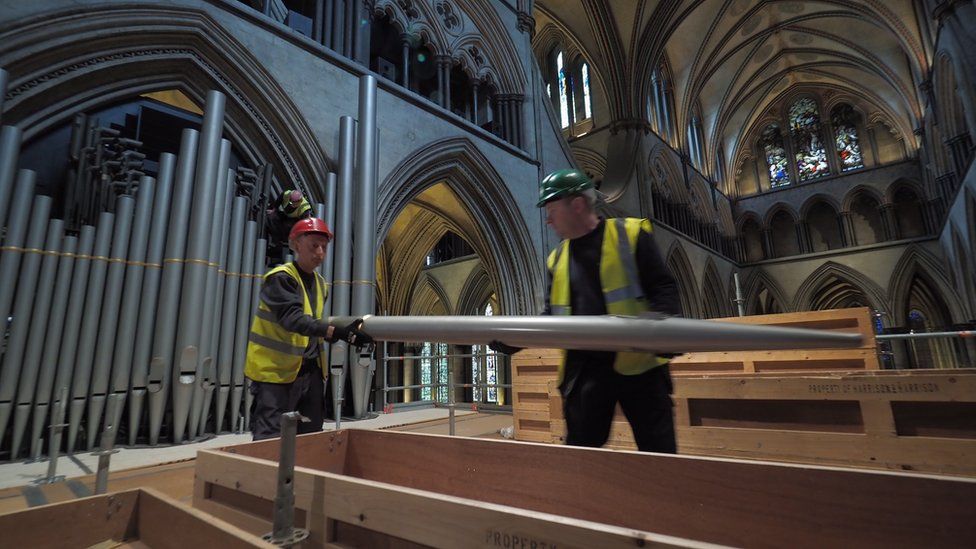Salisbury Cathedral organ removed for major restoration
- Published

Work has begun to remove the 19th Century pipe organ in Salisbury Cathedral for it to be restored.
The removal of the Father Willis organ will be carried out over three weeks and the cleaning process is expected to take 14 months.
The organ consists of 4,000 pipes, with some standing 32ft (10m) high.
The last time such a comprehensive restoration was undertaken was in 1969. This time the work is expected to cost about £700,000.
John Challenger, the cathedral's assistant director of music, said: "When the 'Father Willis' returns, clear of the accumulated dust and grime of half a century, it will sound all the brighter and hopefully be good for another 50 years."
The restoration work is being carried out by Harrison and Harrison, organ builders and restorers from Durham who have cared for the organ since 1978.
The organ's creator, Henry Willis, built several other famous organs, including those found in the Albert Hall and St Paul's Cathedral.
Ian Bruce, from Harrison and Harrison, said: "We work on a lot of his organs but this one is really top of the tree musically and very well respected."
Next month the cathedral will be launching an interactive exhibition entitled Pulling out the Stops that will explore the history of the organ and the organ's construction, as well as taking visitors through the restoration process being carried out.
- Published1 December 2018
- Published9 November 2018
- Published2 June 2018
- Published18 December 2017
- Published27 April 2017
- Published10 May 2011